This article shines a light on the importance of ABA progress notes, especially for parents looking to enhance therapy for their children. It emphasizes how detailed documentation is key to tracking behavior, interventions, and progress. Let’s dive into how structured approaches like SOAP notes can make this easier!
You might be wondering about the role of caregiver involvement in this process. It’s crucial! Engaging caregivers not only supports the child’s therapy but also enriches the documentation process. Plus, exploring digital tools can help ensure that record-keeping is both accurate and efficient—making life a little easier for everyone involved.
Ultimately, all these efforts are aimed at improving treatment outcomes. We’re here to help you every step of the way! If you have any questions or experiences to share, feel free to comment below. Let’s explore this together and support each other on this journey!
Capturing a child's progress in ABA therapy is more than just a routine task; it’s a vital part of their treatment journey. Detailed ABA progress notes do more than document behaviors and interventions; they empower caregivers to actively participate in their child’s development. Yet, many parents find themselves wondering how to effectively document this information. So, what are the best practices for writing impactful ABA progress notes that truly reflect a child's growth?
Let’s explore this together! This article delves into nine exemplary ABA progress notes, offering insights and strategies to enhance therapy outcomes and foster collaboration between therapists and families. We’re here to help you every step of the way!
At Rori Care, we truly understand how vital detailed documentation, including ABA progress notes examples, is in ABA treatment. These ABA progress notes examples serve as a thorough record of each session, capturing key information such as your child's behavior, the interventions used, and their progress towards measurable goals—think enhancing communication skills or reducing challenging behaviors. By maintaining these comprehensive records, healthcare providers can make informed decisions about treatment adjustments, ensuring that your child's care is tailored to their evolving needs.
This flexible approach relies on active caregiver involvement, which not only boosts treatment effectiveness but also fosters a collaborative atmosphere between therapists and families. Skilled behavior analysts regularly review and adjust treatment plans based on outcome report data, making sure that strategies remain evidence-based and aligned with your child's unique requirements. We encourage caregivers to actively participate in tracking their child's progress and to bring up any concerns with their behavior analyst. Together, we can enhance the effectiveness of the treatment and support your child's journey! 😊
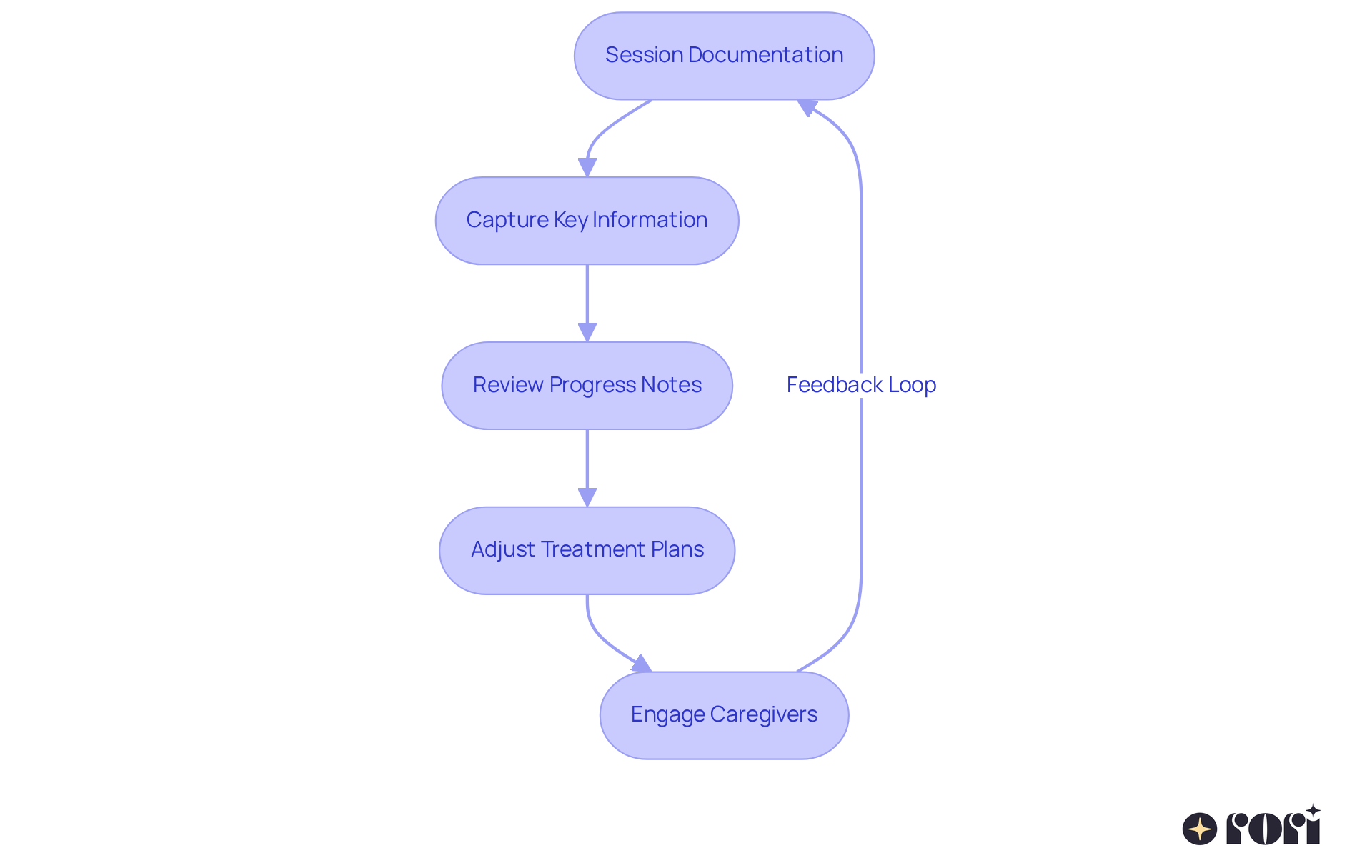
ABA progress notes examples, including SOAP notes—short for Subjective, Objective, Assessment, and Plan—provide a helpful way to document ABA therapy sessions. In the Subjective section, therapists share observations and emotions from the young individual and their parents. This highlights how important caregiver involvement is in the therapeutic journey.
Next comes the Objective section, where we include quantifiable information like the student’s performance on specific tasks, supported by ABA progress notes examples. This data is crucial for creating adaptive treatment plans that evolve based on evaluation reports.
The Assessment dives into the individual’s progress, incorporating insights from our ABA progress notes examples within the behavior care engine. This engine updates intervention and skill acquisition plans after each session, ensuring we’re always on track.
Finally, the Plan lays out the next steps in therapy, ensuring that the approach is personalized and effective, as illustrated by ABA progress notes examples. This organized format not only boosts clarity but also fosters communication among team members and families. Ultimately, it enhances learning, verbal, and social skills for individuals with autism.
Let’s explore this together and see how we can support each other in this journey!

When documenting Discrete Trial Training (DTT) sessions, it’s super important to include key details like the date, duration, and specific skills being targeted, as seen in aba progress notes examples. For instance, you might jot down something like: Conducted 15 trials targeting receptive labeling with 80% accuracy. This not only keeps things organized but also helps everyone stay on the same page!
It’s also essential to note how the young person reacts to prompts and reinforcements during the session. This level of detail, as illustrated by aba progress notes examples, really helps us understand the student’s progress and shapes our future teaching strategies. By actively involving caregivers in this process, we can fine-tune treatment plans to meet each young person's unique needs, ensuring that care remains personalized and effective.
Plus, using AI-driven tools for automatic data collection can make documentation a breeze! Imagine freeing up to 50% more time for direct treatment—how amazing is that? This not only boosts the overall efficiency of ABA therapy but also allows for more meaningful interactions with the kids. Let’s explore this together and see how we can make a difference!
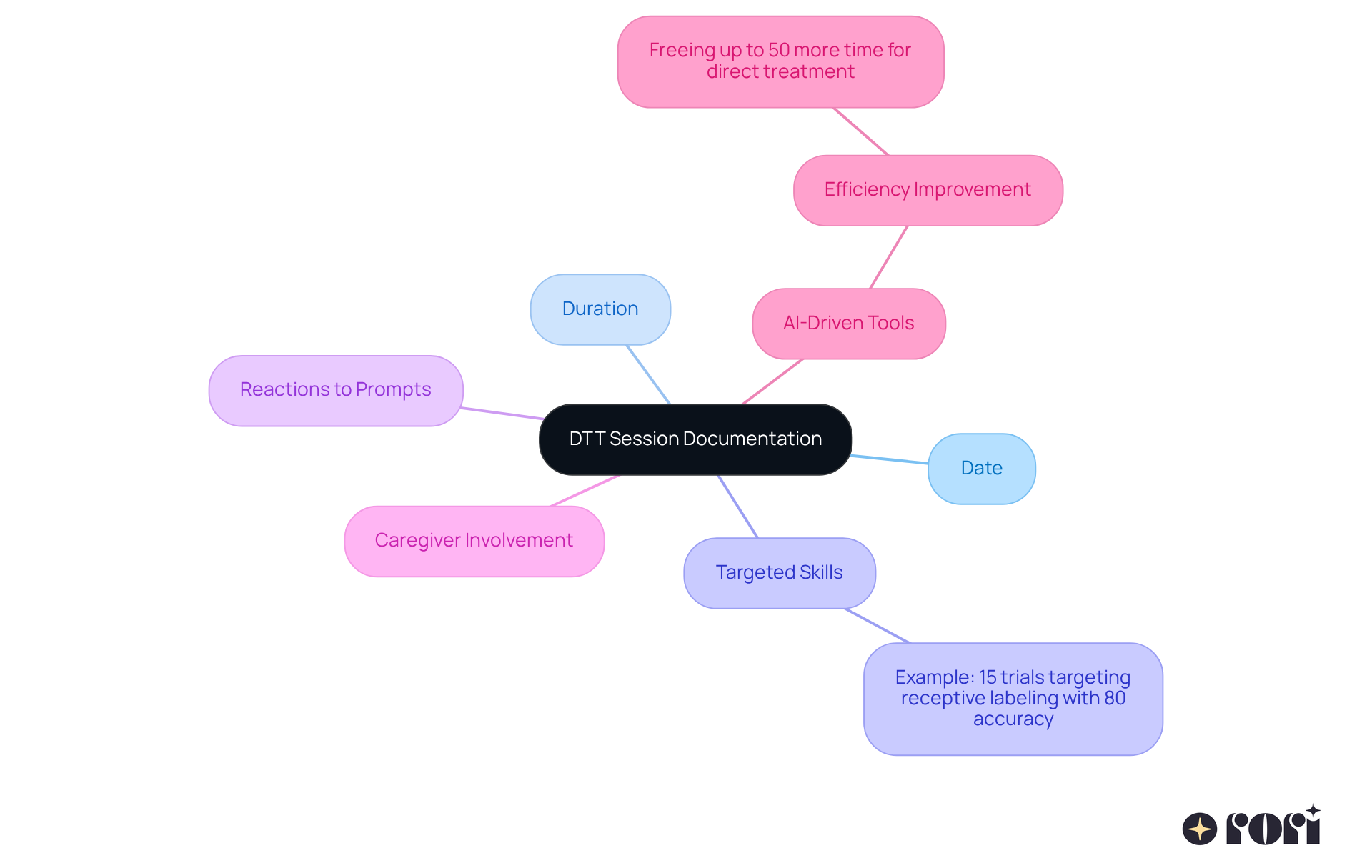
Natural Environment Teaching (NET) session records are all about capturing the context in which learning happens. For example, you might note: 'During snack time, I encouraged the little one to ask for items using the right words.' It's essential to jot down the young one's responses, how effective the prompts were, and any spontaneous communication that pops up. This documentation not only tracks skill acquisition but also gives us valuable insights into how well the individual uses these learned skills in everyday life.
By involving caregivers in this process, we can adjust treatment plans based on the data we gather, ensuring that therapy stays personalized and effective. And here’s something encouraging: when caregivers are actively engaged, 90% of youngsters show significant improvement! Our behavior care engine updates intervention strategies after each session, reflecting the student’s progress and enhancing the overall learning experience.
Plus, with automatic data collection during sessions, our clinical team can keep an eye on developments without interrupting the flow of learning. This means all data is securely stored and anonymized for privacy. Let’s explore this together and see how we can make a difference in your child’s learning journey!
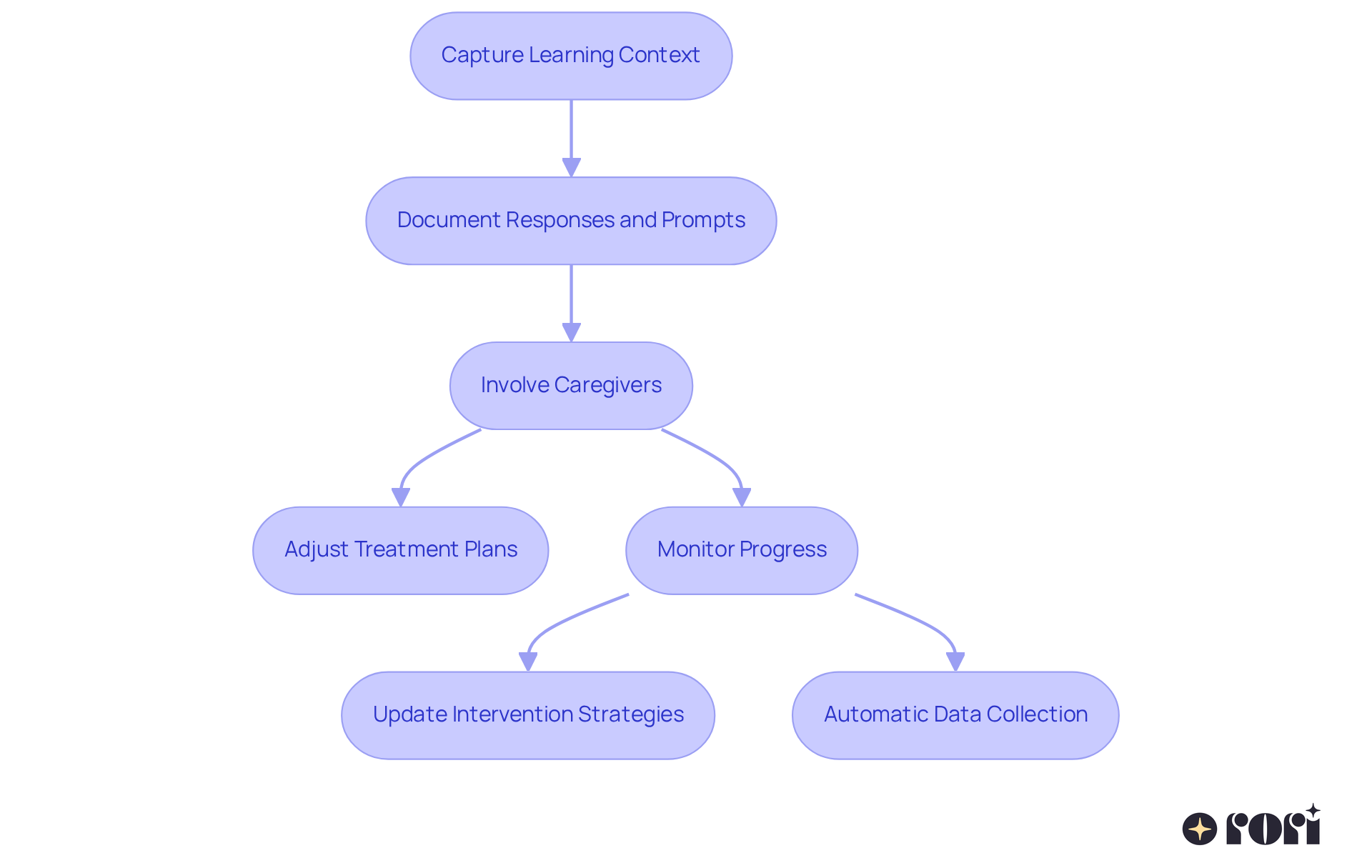
When creating ABA progress notes examples for behavior reduction sessions, it’s important to clearly specify the target behavior, the interventions used, and the individual’s responses. For instance, you might note: Targeted aggressive behavior during playtime; implemented a token economy system. This week, the young individual showed a 50% decrease in occurrences! 🎉 This level of detail, like ABA progress notes examples, helps therapists assess how effective their strategies are and make necessary adjustments to improve outcomes.
By actively involving caregivers and using adaptive treatment plans based on report data, therapists can achieve significant advancements in 90% of children when the recommended hours are fully implemented. Isn’t that amazing? Plus, the behavior care engine revises intervention and skill acquisition plans after each session based on the outcomes achieved.
And let’s not forget about the incorporation of AI-powered tools for automatic data collection and report generation! These tools enhance the efficiency of ABA therapy, ultimately leading to better learning, verbal, and social skills development. We’re here to help you every step of the way as you navigate this journey!
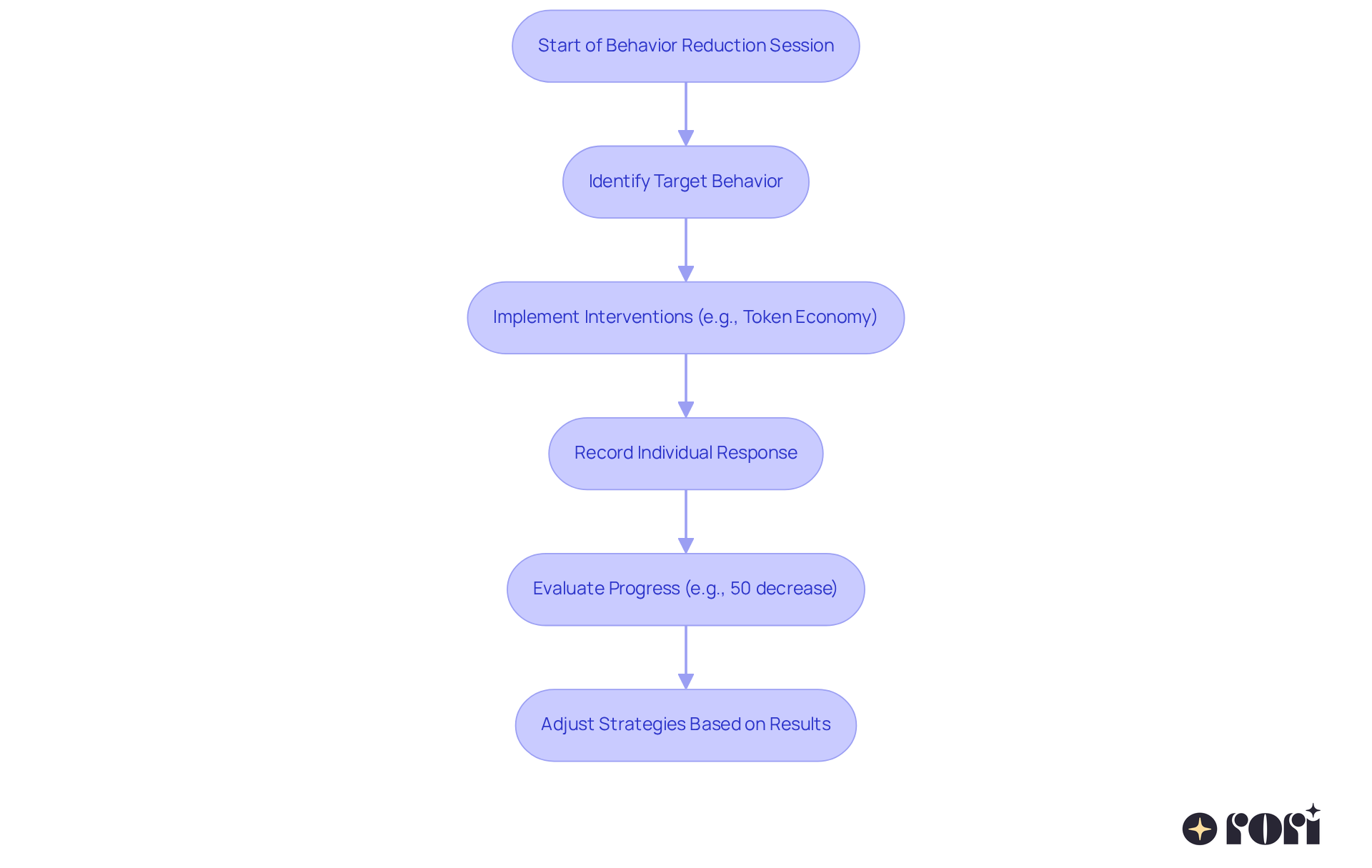
Hey parents! It’s important to be aware of some typical errors that can pop up in ABA progress notes examples. For example, using vague language, not documenting specific interventions, or forgetting to include quantifiable data in ABA progress notes examples can lead to confusion. Instead of saying, 'the student was better today,' how about noting, 'the student completed 5 out of 7 tasks independently'? This kind of clarity, as seen in ABA progress notes examples, helps everyone involved!
By avoiding these pitfalls, you can help ensure that the ABA progress notes examples accurately reflect your child’s development and support effective treatment planning. Did you know that when suggested hours are fully utilized with engaged caregiver participation, about 90% of kids make substantial progress? That’s pretty impressive!
Also, your active involvement is key. When you participate in the documentation process, you help create adaptive treatment plans that are based on real-time data about your child’s progress. This partnership not only boosts the effectiveness of ABA therapy but also empowers you to apply ABA principles and strategies in supporting your child’s behavioral goals.
And here’s a neat tip: incorporating AI-driven report automation can make documentation a breeze! This can free up 50% more time for you to focus on your child’s treatment. Let’s explore this together and make the most of your child’s journey!
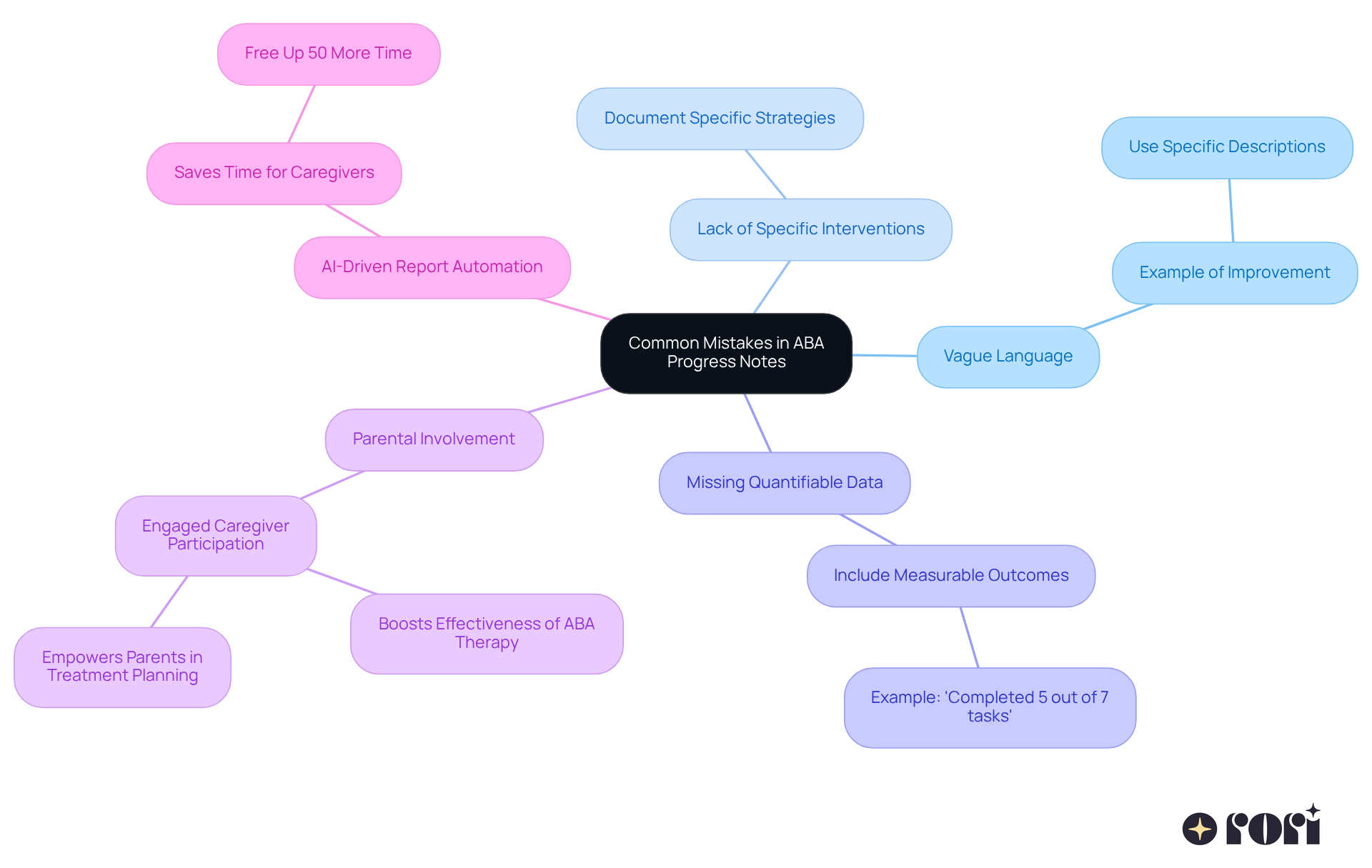
Digital resources for ABA documentation, like specialized software and mobile apps, can really make a difference! They not only improve the precision and efficiency of record-keeping but also support the essential elements of developing successful behavioral programs. These tools often come with handy ABA progress notes examples that help therapists capture important information, ensuring that individualized planning fits right into the documentation process.
Plus, they make it easier to use evidence-based strategies by giving therapists data-driven insights. This helps in evaluating and modifying behavioral plans as needed. Imagine software that automatically generates session records based on the data you input! It not only cuts down on errors but also aligns with measurable objectives, providing clear benchmarks for progress.
By embracing technology, therapists can spend more time delivering quality care instead of getting bogged down in paperwork. This ultimately maximizes the effectiveness of ABA therapy, allowing more time for treatment rather than reports. Let’s explore this together and see how these resources can support you on this journey!
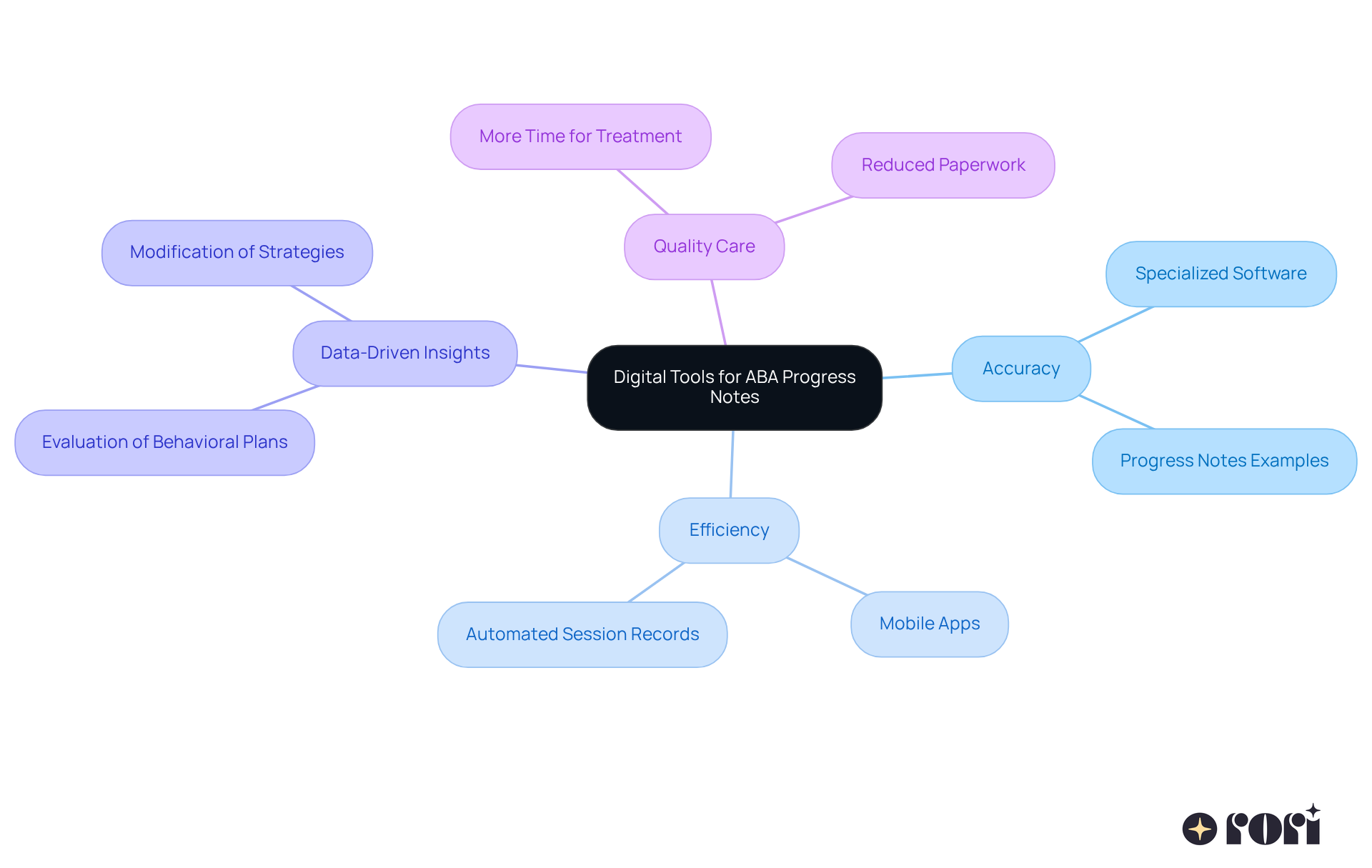
Objective language is so important in ABA session notes, right? It helps ensure clarity and accuracy! Instead of saying something like 'the young one appeared joyful,' how about we say 'the young one smiled and laughed during the activity'? This way, we get a clearer picture of the young individual's behavior, and it really helps with communication among therapists, parents, and everyone involved in the young person's care.
By focusing on what we can see, therapists can create more reliable records that truly reflect the youth's development. And here's something significant: when we fully engage caregivers in the recommended hours, we see amazing progress in 90% of youth! Plus, with Rori Care's behavior care engine, treatment plans are regularly updated based on report data, making sure caregiver involvement is maximized.
This personalized approach, along with AI-driven automation of performance reports, can free up 50% more time for your kid's treatment! How great is that? It really boosts the effectiveness of ABA therapy. Let’s explore this together and see how we can make a difference for our kids!
![]()
Parent involvement in ABA updates is so important for enhancing communication and care. Parents can really make a difference by sharing observations from home, like noting any changes in behavior or skills, and discussing these insights with therapists. For example, a parent might say, 'The young one initiated play with peers at the park, using appropriate language.' This kind of information helps therapists recognize the young person's development in real-world environments and adjust treatment plans as needed.
When caregivers actively participate, it fosters consistency in therapeutic approaches and helps parents gain a deeper understanding of ABA principles. This understanding allows them to make informed choices that positively impact their child's development. By collaborating in the documentation process, parents can take an active role in their child's therapy journey. Ultimately, this leads to improved behavioral outcomes and better family dynamics.
Let’s explore this together! Your insights are invaluable, and we’re here to help you every step of the way!
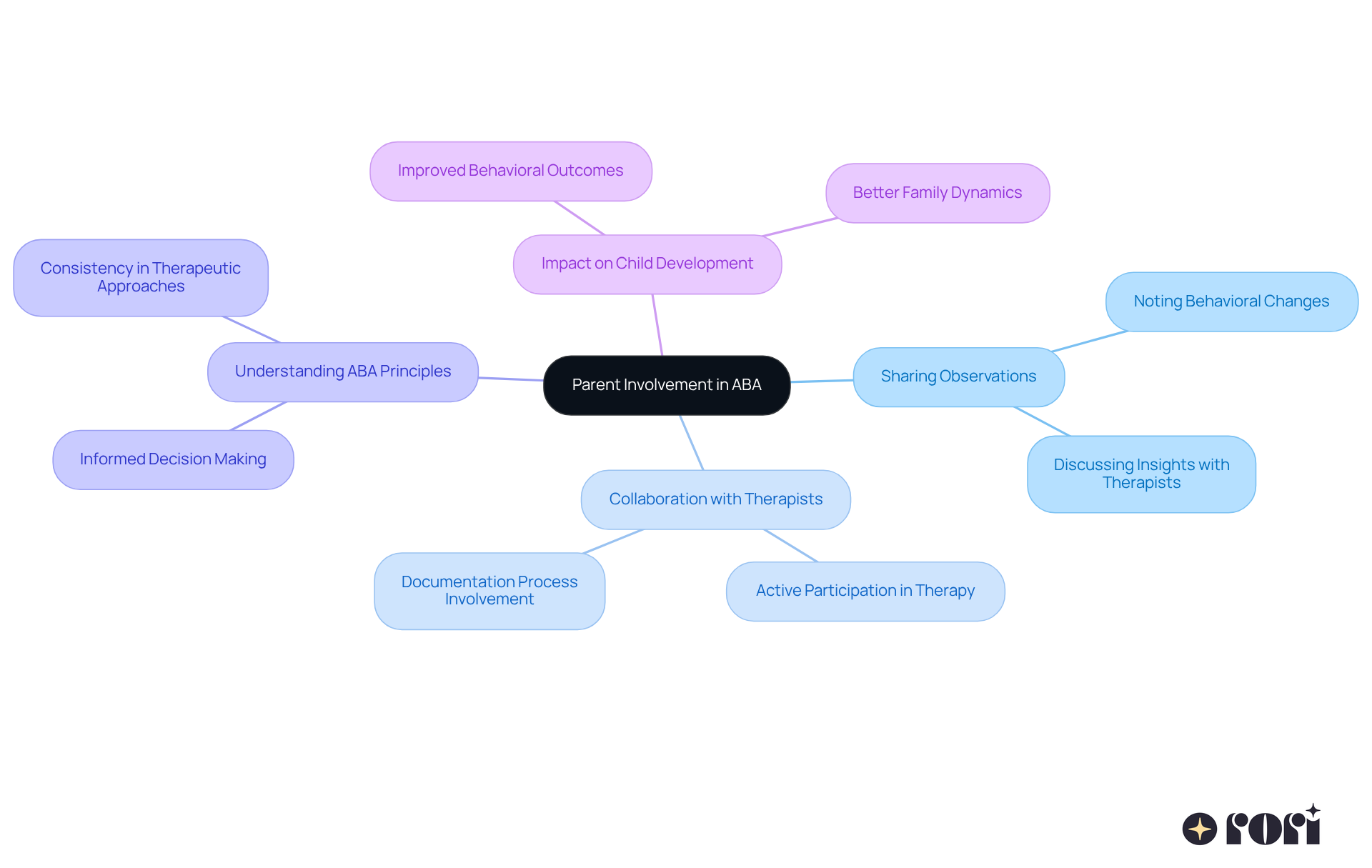
When it comes to composing effective aba progress notes examples, parents face some challenges. It’s essential to stick to best practices, including:
For instance, instead of making broad statements, it’s helpful to focus on particular behaviors and results. You might say, 'The youngster accomplished 3 out of 5 tasks with minimal prompts.' This way, you capture the true essence of their progress!
Keeping a consistent format and reviewing your notes regularly can really make a difference, too. By following these best practices, including the use of aba progress notes examples, you can significantly enhance the quality of your documentation and support your child’s treatment effectively.
And here’s something exciting: with Rori Care's behavior care engine, treatment plans are continuously updated based on progress report data! This ensures that caregiver involvement is maximized.
This adaptive approach not only boosts the effectiveness of therapy but also empowers you as parents to actively participate in your child’s behavioral goals. Let’s explore this together! Your involvement is key, and we’re here to help you every step of the way!

Keeping detailed and structured ABA progress notes is so important for making the most of your child's therapy journey. These notes don't just capture the specifics of each session; they lay the groundwork for making informed adjustments to treatment plans, ultimately enhancing the care tailored to your child's unique needs.
Throughout this article, we've explored various examples of ABA progress notes, like SOAP notes and DTT session documentation. These highlight the importance of using clear and objective language. Engaging caregivers in this process is key! It fosters collaboration and consistency, leading to better behavioral outcomes. Plus, using digital tools can really streamline documentation, allowing therapists to focus more on delivering quality care instead of getting bogged down by paperwork.
In conclusion, your active participation in documenting ABA progress plays a vital role in the success of therapy. By following best practices and utilizing available resources, you can make a significant impact on your child's development. Embracing this collaborative approach not only empowers families but also enhances the overall effectiveness of ABA therapy, ensuring that every child gets the personalized support they need to thrive. Let’s explore this together!
What are ABA progress notes and why are they important?
ABA progress notes are detailed records of each therapy session that capture key information such as a child's behavior, the interventions used, and progress towards measurable goals. They are vital for making informed decisions about treatment adjustments and ensuring that care is tailored to a child's evolving needs.
How does caregiver involvement impact ABA therapy?
Active caregiver involvement boosts treatment effectiveness and fosters a collaborative atmosphere between therapists and families. Caregivers are encouraged to track their child's progress and communicate any concerns with their behavior analyst.
What is the SOAP note format in ABA therapy documentation?
SOAP notes are structured documentation that includes four sections: Subjective (observations and emotions), Objective (quantifiable performance data), Assessment (progress insights), and Plan (next steps in therapy). This format enhances clarity and communication among team members and families.
What details should be included in Discrete Trial Training (DTT) session notes?
DTT session notes should include the date, duration, specific skills targeted, the number of trials conducted, and the accuracy of performance. It’s also important to document the child's reactions to prompts and reinforcements during the session.
How can AI-driven tools assist in ABA therapy documentation?
AI-driven tools can automate data collection, significantly reducing the time spent on documentation and allowing therapists to dedicate more time to direct treatment and meaningful interactions with children.